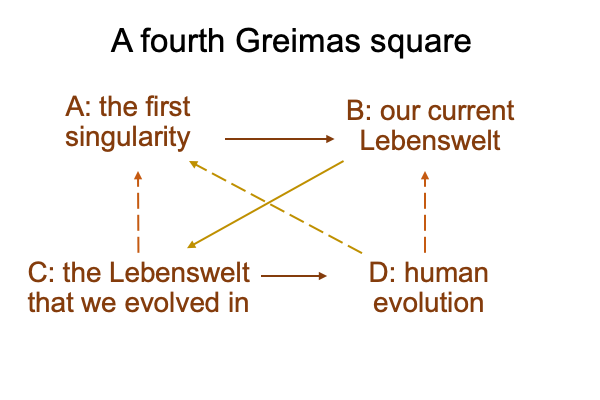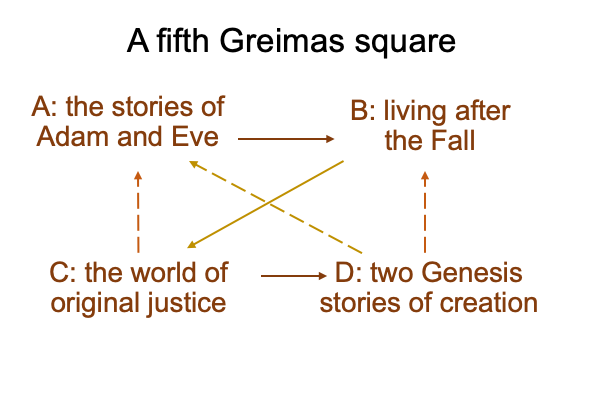0099 Here is where I left off.

0100 The first singularity (A) is the focal term.
0101 Our current Lebenswelt (B) contrasts with the first singularity, because it follows the event. Our current Lebenswelt (B) is characterized by speech-alone talk. Speech-alone talk allows explicit abstraction, along with implicit abstraction. Explicit abstraction involves symbolic labels (spoken words) and the mental manipulation of such labels (symbolic operations). Implicit abstraction does not require spoken words and is very difficult to explain using spoken words.
0102 The Lebenswelt that we evolved in (C) contradicts our current Lebenswelt (D). The Lebenswelt that we evolved in(C) is characterized by hand-talk and hand-speech talk. Hand talk relies on sign-processing, which is the fundament for implicit abstraction. Implicit abstraction has nothing to do with labels and symbolic operations. Rather, implicit abstraction engages sign-processes, starting with sensation, opening to perception and (eventually) initiating judgment. Implicit abstraction allows us to understand actualities2 by intuitively recognizing the appropriate normal context3 and potential1. This is what we evolved to do.
The Lebenswelt that we evolved in (C) complements the first singularity (A), in so far as scientists, in our current Lebenswelt (B), who cannot imagine the first singularity (A), also cannot imagine the ultimate human niche as the potential of triadic relations (C).
0103 Human evolution (D) contrasts with the Lebenswelt that we evolved in (C), speaks against the first singularity (A), and compliments our current Lebenswelt (B).
Human evolution (D) is a scientific construct. The Lebenswelt that we evolved in (C) is the world of signification of our distant ancestors. Scientists do not want the construct of human evolution (D) to have a discontinuity (A). Why? They rely of the principle of uniformitarianism in order to understand the prehistoric past. If there is a twist (A) in human evolution (D), then this principle does not apply. Scientists are thrown in the same basket as the rest of us (B), wondering whether the labels that we use to perform symbolic operations are as good as we presume they are.
0104 Of course, Loke takes us into the next Greimas square.

Here is where Loke’s theoretical construction begins.
